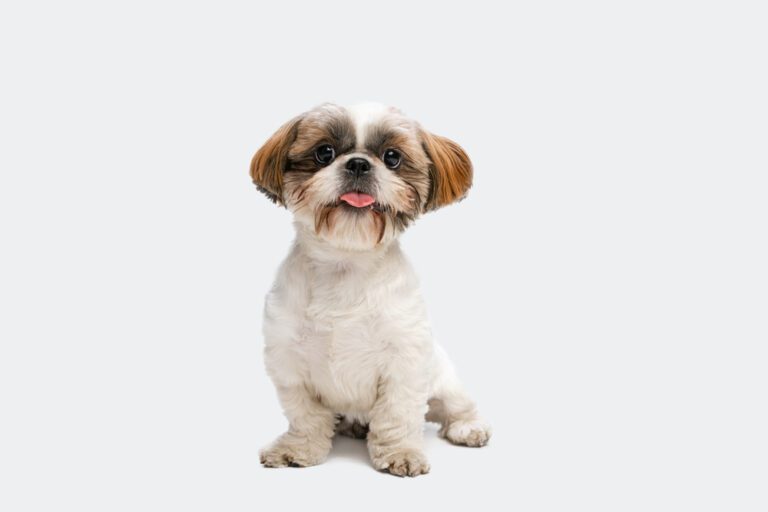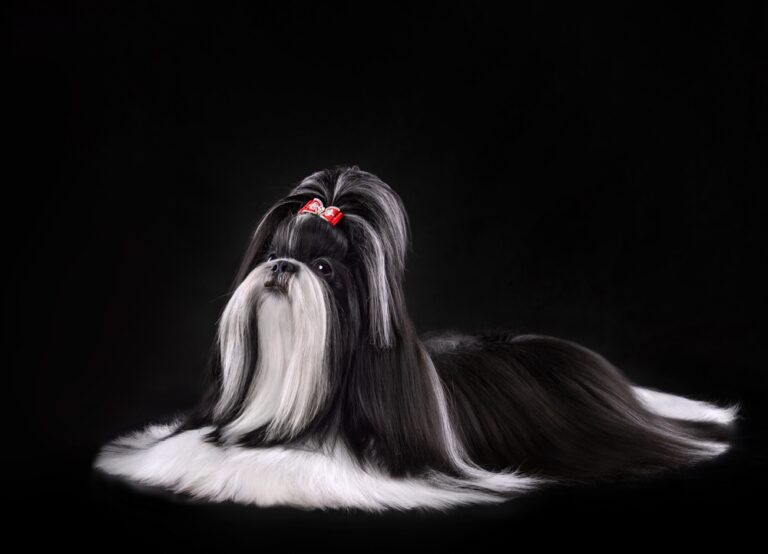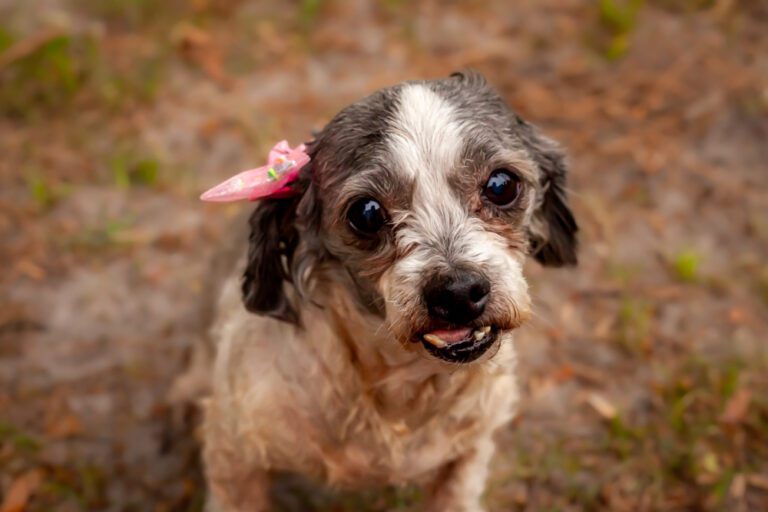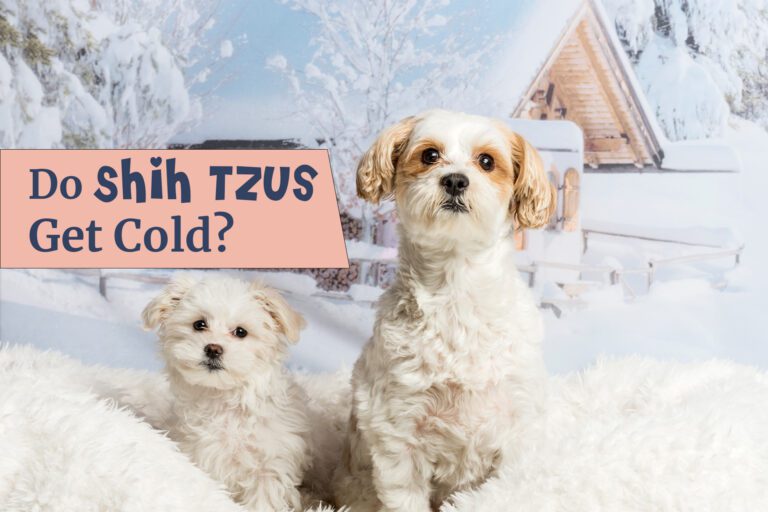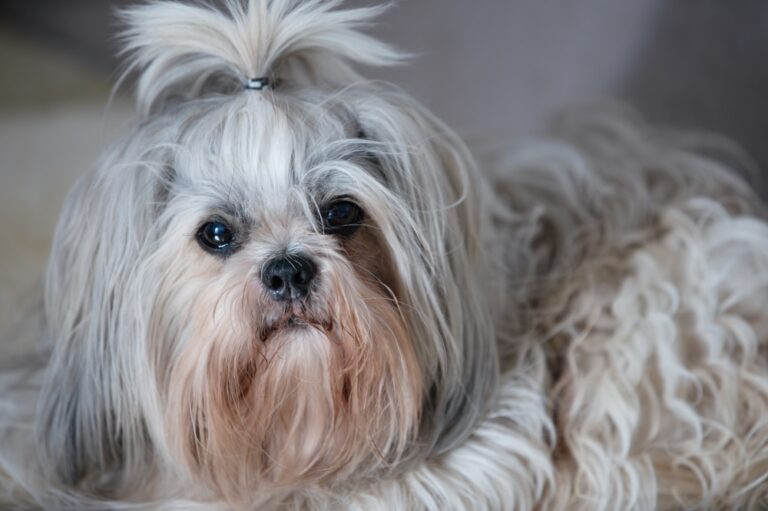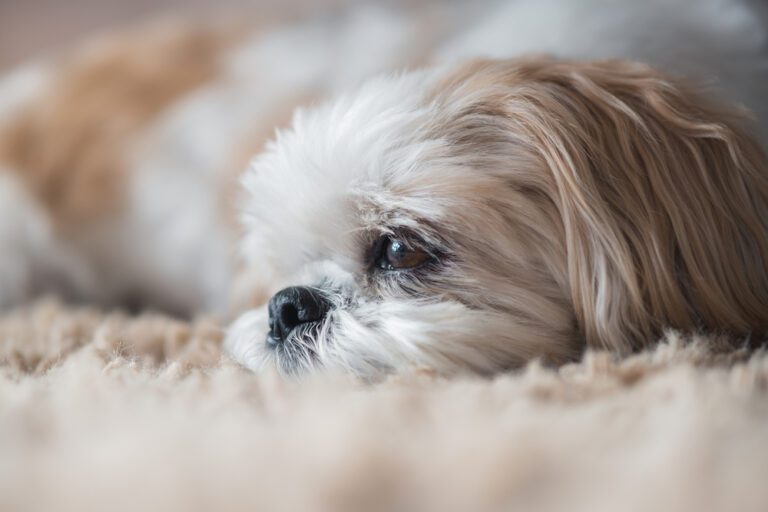Reverse Sneezing in Shih Tzus: Top Causes Explained
Many Shih Tzu owners are often startled by a peculiar phenomenon: the reverse sneeze. Unlike a regular sneeze that expels air, a reverse sneeze involves a sudden, forceful inhalation, often accompanied by snorting or gagging sounds.
While it can be alarming to witness, it’s generally harmless. Understanding why Shih Tzus are particularly prone to this can help alleviate owner concerns and provide appropriate support.
What is Reverse Sneezing in Shih Tzus?
Dogs possess a detailed respiratory system, comprising various passages that manage the flow of air into and out of their bodies. A reverse sneeze, medically known as paroxysmal respiration, occurs when the dog rapidly and repeatedly inhales through the nose, usually in an attempt to clear an irritation involves the nasopharynx (the region located behind the nose and above the soft palate). When this happens, the soft palate often spasms and extends, briefly obstructing the trachea and resulting in that distinct snorting noise.
Top Causes of Reverse Sneezing in Shih Tzus
Shih Tzus are predisposed to reverse sneezing due to their unique brachycephalic (short-nosed) skull structure. This anatomical feature significantly impacts their respiratory dynamics.
1. Brachycephalic Syndrome
The most significant contributing factor to reverse sneezing in Shih Tzus is their brachycephalic anatomy. This syndrome encompasses several potential issues:
- Elongated Soft Palate: In brachycephalic breeds, the soft palate can be disproportionately long, extending into the airway and sometimes getting sucked into the larynx during inhalation, triggering a reverse sneeze.
- Stenotic Nares (Narrow Nostrils): Restricted nostrils limit the amount of air that can enter, leading to increased negative pressure during inhalation, which can irritate the nasopharynx.
- Hypoplastic Trachea (Narrow Windpipe): A narrower than normal trachea can further restrict airflow and make the respiratory system more sensitive to irritants.
2. Irritants and Allergens
Similar to humans, dogs can experience sensitivities to allergens and other irritants carried in the air. Their system might then induce a reverse sneeze as an attempt to expel these unwelcome particles.
- Dust and Pollen: Common environmental allergens can irritate the nasal passages.
- Strong Scents: Perfumes, cleaning products, air fresheners, and even certain types of pet shampoo can be potent irritants.
- Smoke: Exposure to smoke, whether from cigarettes, fireplaces, or wildfires, can significantly irritate a dog’s respiratory system.
- Dust Mites: Microscopic organisms found in dust can cause allergic reactions.
3. Excitement and Rapid Eating/Drinking
High levels of excitement or rapid intake of food and water can also provoke a reverse sneeze.
- Over-excitement: When a Shih Tzu gets overly excited, their breathing rate increases and can become more forceful, potentially causing a spasm in the soft palate.
- Gulping Food or Water: Rapid ingestion can lead to food or water particles irritating the back of the throat or nasal passages.
4. Post-Nasal Drip
When mucus from the nasal passages drains into the back of the throat, it can irritate the pharynx and provoke a reverse sneeze. This can be due to:
- Mild Upper Respiratory Infections: Viral or bacterial infections can cause increased mucus production.
- Allergies: When allergies flare up, they frequently cause an overproduction of mucus.
5. Other Less Common Causes
While less frequent, other factors can contribute:
- Foreign Objects: Occasionally, a tiny foreign object stuck in the nasal passages or throat might lead to ongoing irritation.
- Dental Issues: Severe dental disease, especially infections, can sometimes lead to inflammation that affects nearby respiratory structures.
- Nasopharyngeal Polyps or Tumors: Although rare, growths in the nasal or throat area can cause irritation and blockages.
When to Seek Veterinary Attention
While most reverse sneezes are benign and resolve on their own, it’s important to be aware of signs that warrant veterinary consultation:
- Increased Frequency or Duration: If reverse sneezing becomes more frequent, lasts longer, or seems to be worsening.
- Associated Symptoms: Coughing, difficulty breathing, nasal discharge (especially colored), loss of appetite, lethargy, or blue gums.
- Onset in Older Dogs: If a dog that has never reverse sneezed before suddenly starts, it’s worth investigating.
Conclusion
Reverse sneezing in Shih Tzus is a common occurrence, largely attributed to their charming brachycephalic features. By understanding the underlying causes, from anatomical predispositions to environmental irritants, owners can better manage and differentiate between a normal episode and something that requires professional attention. Always consult your veterinarian if you have any concerns about your Shih Tzu’s respiratory health.
FAQs
Is reverse sneezing painful for my Shih Tzu?
Generally, no. Although it can appear alarming, reverse sneezing generally causes no pain to your dog. They might seem momentarily confused or distressed, but they usually recover quickly.
What can I do to help my Shih Tzu during a reverse sneeze episode?
You can try gently massaging their throat or lightly covering their nostrils for a second to encourage swallowing, which can help clear the irritation. Offering a small sip of water can also be effective. Remaining calm yourself will help keep your dog calm.
Can reverse sneezing be prevented?
Complete prevention is difficult due to their brachycephalic nature. However, minimizing exposure to irritants (like strong scents or smoke) and ensuring a clean environment can reduce occurrences. Using a harness instead of a collar can also alleviate pressure on the throat.
Is reverse sneezing the same as choking?
No, they are different. Choking is a complete or partial blockage of the airway, often accompanied by pawing at the mouth, frantic behavior, and true difficulty breathing. Reverse sneezing is an inhalation reflex to clear an irritation.
At what age do Shih Tzus typically start reverse sneezing?
Reverse sneezing can start at any age, but it’s often noticed in puppies or young adults as their respiratory systems develop and they are exposed to various environmental factors. It can also persist throughout their lives.



